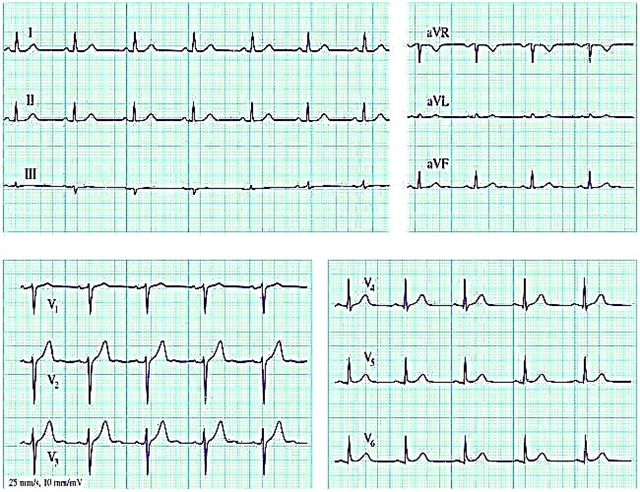With maxillary sinusitis, an inflammatory process occurs in the tissues of the accessory chambers of the nose. Patients and doctors prefer to treat it with medication. However, it is not always possible to defeat the disease only with the help of drugs. In severe or advanced cases, in the presence of complications or an atypical course of the disease, it is necessary to carry out surgical treatment of sinusitis.
Indications for surgical treatment and its main directions
 If the doctor has used the entire existing arsenal of conservative methods of therapy, and the patient's condition does not improve, then more radical actions are needed. Otherwise, the situation can get out of control and develop into serious complications.
If the doctor has used the entire existing arsenal of conservative methods of therapy, and the patient's condition does not improve, then more radical actions are needed. Otherwise, the situation can get out of control and develop into serious complications.
The indications for surgery are:
- lack of positive dynamics in drug treatment and physiological procedures for 3-4 weeks;
- chronic closed-type sinusitis (without secretion outflow);
- odontogenic sinusitis, in which isolation of the sinus from the oral cavity is required, or necrotic processes develop in the mucous membranes;
- secondary complications due to a purulent process in the sinus, threatening the spread of infection to neighboring organs;
- fungal infection that does not respond to antifungal drugs;
- the need to remove a mechanical obstruction in the way of fluid exit (an overgrown cyst or polyp, a bone fragment, filling material or other foreign object).
The decision about the operation is made by the otolaryngologist, taking into account the entire clinical picture of the disease, as well as the patient's condition. In urgent cases, surgical intervention is carried out immediately, in the rest - after preliminary preparation of the patient in the presence of relative contraindications, which may be:
- arterial hypertension;
- severe pathologies of internal organs (liver, kidneys);
- pathology of the endocrine and cardiovascular system;
- systemic blood diseases.
In such cases, the exacerbation of the underlying disease is first treated or removed, and then an ENT operation is performed, which sometimes requires the presence of another specialized specialist and the presence of additional equipment.
Surgical intervention aims to eliminate the root cause of the disease (bacteria or fungi) and restore the patency of the connecting canals of the maxillary sinuses. In this case, the operation for sinusitis is aimed at removing individual elements of the air pockets:
- pathologically altered, infected or damaged soft tissue;
- elements of the bony walls of the sinus in order to expand the natural canals or create an artificial fistula to remove purulent exudate;
- overgrown polyps, cysts and tumors;
- foreign objects overlapping the anastomosis or injuring the mucous membranes.
To perform these tasks, various methods are used: endoscopy, puncture, radical surgery, treatment of sinusitis with a laser. The doctor chooses the type of intervention based on the indications.
Endoscopic operations
 With sinusitis, the operation can lead to a complete cure of the disease, even in the most severe and neglected case. Modern technologies make it possible to carry out an intervention with minimal tissue damage. The use of endoscopes is well established.
With sinusitis, the operation can lead to a complete cure of the disease, even in the most severe and neglected case. Modern technologies make it possible to carry out an intervention with minimal tissue damage. The use of endoscopes is well established.
An endoscope is a special device, which is a thin fiber-optic tube to which additional channels are connected through which various miniature instruments can be inserted into the cavity: clamps, coagulators, scissors, scalpel. Illumination of the sinus and video filming is carried out through the fiber, so the doctor can clearly see problem areas on the screen and carry out the necessary manipulations.
After examination, microinstruments (a scalpel or a device with special barbs) are inserted into the sinus, with the help of which obstructive tissues are cut out pointwise, without affecting healthy areas. You can also remove a problematic polyp or bone fragment blocking the connecting canal. All actions are aimed at restoring natural drainage and air exchange in the maxillary pocket.
Treatment procedures last from half an hour to one and a half hours and are carried out mainly under local anesthesia, general anesthesia is rarely used. Endoscopic interventions are minimally invasive. Tissue damage with them is minimal, all scars are in the nose and are not visible visually, the recovery period is much shorter than with the radical method. About 2 weeks after the endoscopy, the patient is seen by a doctor, takes antibiotics and steroids, sometimes it is necessary to additionally remove mucus and blood clots.
Laser therapy for maxillary sinusitis
Laser treatment of sinusitis, offered in many clinics, is nothing more than a kind of endonasal surgery. However, instead of surgical instruments, a laser is used, fed through an endoscope. Its high-intensity radiation of a certain frequency affects the mucous membranes and heats them. Superficial microscopic burns are formed that do not cause pain.
In otolaryngology, helium-neon laser devices are used that emit a red color that can penetrate the cell membranes of the mucous membranes. Also common are infrared semiconductor lasers, which have a deeper penetration into tissues, but have a weaker effect.
Laser therapy allows you to achieve the following goals:
- due to burns and narrowing of the capillaries, the total volume of the pathologically altered mucous membrane gradually decreases, this makes it possible to restore natural air exchange in the chamber;
- reducing the amount of swollen tissue improves blood microcirculation in the affected organ;
- the immune system is stimulated to fight the disease more actively, which speeds up recovery;
- strengthening the effect of antibiotics on pathogens, which makes it possible to reduce their dosage.
To achieve the desired result, 7-10 laser therapy sessions should be performed.
The procedure is bloodless, painless, and allows you to completely disinfect the sinus, with almost no contraindications. There is no need to go to the hospital, everything is done on an outpatient basis.
Puncture of the paranasal sinus
Another minimally invasive way to free the accessory chambers from accumulated secretions with pus is puncture. When it is carried out, an artificial opening is created for the withdrawal of exudate and delivery of the necessary pharmacological preparations directly to the affected area. Unlike endoscopy, no special preparation for a puncture is needed, only fluoroscopy is sometimes required.
After anemization and local anesthesia, the otolaryngologist, using a Kulikovsky needle, pierces the thinnest inner wall of the sinus through the middle or lower nasal passage. After that, a syringe is connected to the needle through a cannula, which injects a liquid into the sinus (saline with mucolytics). The thick exudate is liquefied and excreted. After rinsing, medications are injected inside, usually antibiotics or antiseptics.
To completely destroy pathogens, the doctor makes several punctures every other day. Depending on the severity of the disease and the resistance of the pathogen, you need to do from 2 to 5 punctures.When the patient is in hospital, it is possible to install a temporary catheter for drainage of the cavity and infusion of drugs without an additional puncture. If this method of treatment does not work, then it is necessary to consider the situation with respect to more serious treatment.
Preparation for radical surgery for sinusitis
The extranasal (open) method allows a wider view of the affected organ, access to all its parts. Radical surgery is much more traumatic and has been prescribed less and less lately. The indications for her are:
- ineffectiveness of drug treatment of the disease;
- lack of the desired result during puncture or endoscopy;
 manifestation of complications in the form of infection of bone tissue or meninges;
manifestation of complications in the form of infection of bone tissue or meninges;- an element blocking the fistula (a large polyp or bone fragment) cannot be removed endonasally;
- the presence of malignant neoplasms in the chamber;
- the need to correct traumatic injuries or restore the integrity of the bone septum between the oral cavity and sinus in case of odontogenic sinusitis.
After preliminary preparation of the patient, which can last from 1-2 hours to several days, an operation is performed under general anesthesia, which is performed by the surgeon with the participation of the attending otolaryngologist. The patient's preoperative preparation plays a very important role in the success of the operation. It is necessary to conduct a thorough diagnostic examination of the patient and prepare him physically and mentally.
If we are not talking about an urgent situation, then a person is placed in an inpatient department, measures are taken to reduce the manifestations of concomitant or chronic diseases, and a special diet is prescribed. The patient stops drinking and eating no later than 8 hours before the surgery.
Open surgery for maxillary sinusitis
Surgical intervention for sinusitis is most often performed using the Caldwell-Luc technique. Its scheme looks like this:
- After general anesthesia, the patient lies on his back.
- Under the upper lip, above the gum, just above the fold, an incision is made to the bone. The beginning of the incision is half a centimeter from the frenum, and the end is about 5 or 6 teeth, the total length of the incision is 4 cm. The tissues are parted, opening the canine fossa.
- With a chisel or chisel Voyachek, a hole is punched on the front wall of the sinus in the thinnest place, which is subsequently expanded to the desired size with special bone forceps. Usually the diameter of the hole to be drilled is 2 cm.
- With the help of a bone spoon or a curved raspator, polyps, purulent masses, dead and pathologically altered tissues are carefully scraped out.
- In the chronic form of the disease, the cells of the ethmoid labyrinth are also affected, so they are also opened and cleaned through the operated sinus.
- The operation ends with the closure of the fistula and the imposition of a counter-opening (fistula) in the area of the lower nasal passage. It can last for several hours.
- After the end of all manipulations, a turunda with antibacterial ointment or iodoform is introduced into the chamber.
 The recovery period is usually 5-6 days. During this time, the maxillary cavity is washed several times with antiseptics.
The recovery period is usually 5-6 days. During this time, the maxillary cavity is washed several times with antiseptics.
Systemic antibiotics are prescribed to suppress pathogens, analgesics to relieve pain, vasoconstrictor drops and antihistamines to reduce swelling and improve breathing through the nose. Physical activity in the postoperative period is contraindicated.
Sometimes surgery for sinusitis provokes complications, including:
- nausea and vomiting after anesthesia;
- severe bleeding;
- deterioration of smell, taste, or vision;
- loss of sensitivity in the upper jaw;
- the appearance of fistulas;
- transition of infection to healthy paranasal pockets or secondary infection of the sinuses.
The main condition for the successful surgical treatment of sinusitis, both endonasally and in a radical way, is the qualification of the doctor, adherence to the standards of the operation and high-quality preparation for it.

 manifestation of complications in the form of infection of bone tissue or meninges;
manifestation of complications in the form of infection of bone tissue or meninges;

